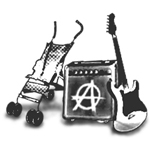First of all: what is transmedia?
According to wikipedia the definition of transmedia is:
Transmedia storytelling (also known as multiplatform storytelling) is the technique of telling a single story or story experience across multiple platforms and formats using current digital technologies, not to be confused with traditional cross-platform media franchises, sequels or adaptations.
From a production standpoint, it involves creating content that engages an audience using various techniques to permeate their daily lives. In order to achieve this engagement, a transmedia production will develop stories across multiple forms of media in order to deliver unique pieces of content over multiple channels. Importantly, these pieces of content are not only linked together (overtly or subtly), but are in narrative synchronization with each other.
Can a documentary be considered transmedia?
I think so. Of course, I’m not an academic – but just a filmmaker and media enthusiast that is trying something new. So feel free to talk to me about definitions, structure and trends.
But basically I’m thinking: in narrative fictional transmedia storytelling a story is told by the creators to the audience on many different platforms (web video, fictional facebook profiles, text messages, etc.) and the audience engages by finding clues, making suggestions, interacting with the fictional characters and the rest of the audience.
So with a documentary the same events can take place, just that they’re not fictional. Maybe there is not a (preconceived) storyline that is developing by means of all the different communications and creations. But in the case of documentary All’s Well and Fair it isn’t that story-driven in the first place. It’s character-driven. It’s experience-driven. It’s conversation-driven. As the audience becomes engaged with the film through multiple platforms and format (e.g., the web series, the various social networks and posting their own videos) they become part of telling their side of the story and of the All’s Well and Fair transmedia happening.
Why make All’s Well and Fair a web series or transmedia experience?
This is not a traditional documentary in the American theatrical documentary sense. It doesn’t have a 3-act story line where a hero we meet in the first act struggles against obstacles in the second act and hopefully wins it all in the third act. This isn’t even a straight-up portrait film. This is a conversation; a conversation between women, a conversation between their younger and older selves and between a film and you. The story is there, because every conversation tells a story.
Since the film is rather unconventional and has a DIY/indie spirit at its heart, I was looking for an alternative, DIY, grassroots and direct way to reach the audience. I wanted to honor the sentiment that Rachel expressed in the film: “Our culture is being sold to us at this point instead of us creating it for ourselves. […] We should be in our cities, in the woods and on our fields […] making the culture ourselves. But now we just watch these boxes and have it dictated to us. And it’s very sad. I don’t want that for my kids.”
Time and progress were on my side when technology and culture had developed to the state we’re in now and I am able to utilize the video streaming and sharing site YouTube, social media networks and mobile apps like Facebook and Twitter, RSS feed websites like WordPress and interactive platforms like Disqus and Google Hangout to release All’s Well and Fair not just like a documentary film, but as an interactive transmedia experience, where everyone can become part of the conversation via comments, discussions and their own response videos.
I am so excited to bring this film to you in this perfectly fitting way!
